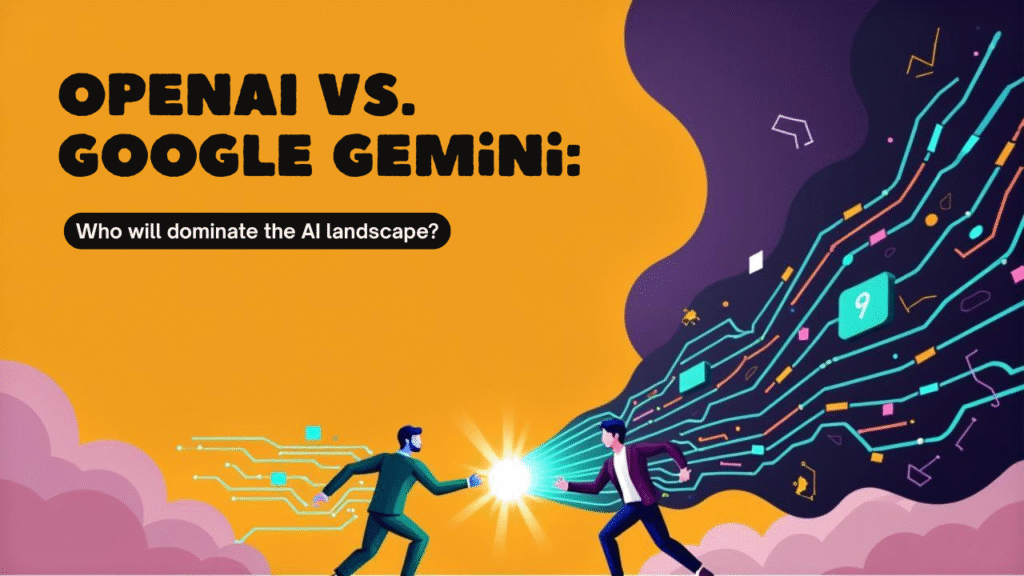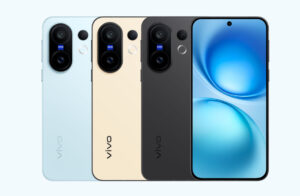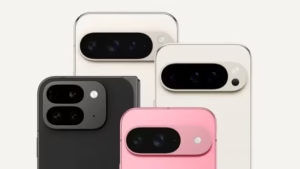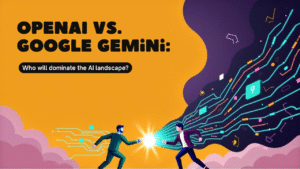OpenAI vs. Google Gemini: The AI race of 21st Century

OpenAI vs. Google Gemini the two strong champion of AI race in 2025. OpenAI’s latest o3/o4-mini models and Google’s Gemini 2.5 are redefining artificial intelligence in 2025. This in-depth, human-first comparison explores their features, strengths, and quirks—helping you decide which AI best suits your needs, whether you’re coding, creating any new artistic things, or just curious about the future of smart machines which you might use.
The Battle of the Processing Brains: OpenAI vs. Google Gemini
Let’s face it—if you’ve ever wished your computer could not only fetch your emails but also analyze your vacation photos and write a haiku about them, you’re living in the right era. The AI arms race is heating up, and at the center are two titans: OpenAI (with its new o3 and o4-mini models) and Google Gemini 2.5. But which one deserves your digital affection? Grab your popcorn (or your debugging tool of choice)—we’re about to break it down.
What’s New in 2025?
AI Models Are Smarter,Intelligent, Funnier, and Maybe a Bit More Humble
Both giants OpenAI and Google have rolled out their most advanced models ever, promising not just better answers to questions, but smarter,intelligent and more nuanced reasoning capable. Here’s what’s making waves about these models:
OpenAI o3 & o4-mini: The Deep Thinkers
-
o3 is Open-AI’s most powerful reasoning model yet, excelling at coding, mathematics, science, and even visual perception. It can analyse images, charts, and graphics—so yes, it’ll finally understand your chicken-scratch whiteboard sketches.
- o4-mini is the nimble, cost-efficient sibling, optimised for speed and high-volume tasks while still delivering impressive accuracy in mathematics, coding, and visual tasks.
Key Features:
-
Agentic Reasoning: These models can independently decide which tools to use (web search, Python, file analysis) to tackle complex problems.
-
Multi-modal Mastery: Both models handle text and images, and can generate visuals on demand.
-
Sharper Memory: They reference past conversations, making responses more relevant and personal.
-
Reduced Errors: o3, for example, makes 20% fewer major mistakes than its predecessor on tough, real-world tasks.
Google Gemini 2.5: The Context King
-
Gemini 2.5 is Google’s most intelligent “thinking model,” designed to reason through problems before answering—think of it as the AI equivalent of “think twice, speak once”
- It’s not just a chat bot; it’s the backbone for all of Google’s AI efforts, powering everything from search to email summarisation.
Key Features:
-
Deep Reasoning: Gemini doesn’t just spit out answers; it explains, contextualises, and adapts to your needs.
-
Multi-modal Input: Text, images, audio, video—Gemini can handle them all, and even integrates with Google services like Maps and Docs.
-
Contextual Memory: It remembers your queries and refines answers as conversations progress.
-
Product Integration: Gemini can read your emails, identify products in photos, and pull data from across your Google universe.
How Do They Compare?
Let’s See Who Wins the AI Talent Show
1. Reasoning and Problem-Solving
-
OpenAI o3/o4-mini:
-
Excels at multi-step reasoning, especially in technical fields like programming and science.
-
Can independently use tools (like Python or web search) to solve complex, layered questions
-
-
Google Gemini 2.5:
-
Designed for “thinking before answering,” offering explanations and context.
-
Especially strong in conversational reasoning, adapting responses as the dialogue evolves
-
2. Multi-modal Abilities
-
Open-AI:
-
Handles text and images with ease, and can generate images (including Studio Ghibli-style anime, for the art lovers)
-
Particularly good at analysing visuals—even low-quality sketches.
-
-
Gemini:
-
Accepts text, images, audio, and video as input.
-
Integrates with Google services, so it can pull up your emails, photos, or even your next meeting location.
-
3. Speed and Efficiency
-
o4-mini:
-
Built for speed and high-volume use—think of it as the AI equivalent of a double espresso.
-
Gemini 2.5:
-
Prioritises accuracy and context, but is also optimised for enterprise-scale workload.
-
-
4. Customisation and Integration
-
Open-AI:
-
Offers robust APIs and fine-tuning options, making it a favourite for developers who want to build custom solutions.
-
-
Google Gemini:
-
Seamlessly integrates with the Google ecosystem, making it ideal for users already living in Google’s world.
-
5. Safety and Reliability
-
Open-AI:
-
Enhanced safety protocols and reduced error rates, with a “Preparedness framework” to address emerging risks.
-
-
Google Gemini:
-
Built-in safeguards and continuous updates, benefiting from Google’s extensive infrastructure and security expertise.
-
The Human Touch: Real-World Use Cases
Let’s imagine you’re planning a surprise birthday party for your friend, who’s a software developer with a penchant for obscure mathematics jokes:
-
With Open-AI o3:
-
You upload a photo of your party plan scribbled on a napkin. o3 deciphers your handwriting, suggests a Python script for RSVP tracking, and even generates a custom mathematics -themed invitation.
-
-
With Gemini 2.5:
-
You ask Gemini to scan your emails for your friend’s favourite cake flavour, cross-check your calendar for free weekends, and summarise the best local bakeries—all while chatting with you about the pros and cons of chocolate ganache.
-
Pros and Cons: OpenAI vs. Google Gemini
| Feature | OpenAI o3/o4-mini | Google Gemini 2.5 |
|---|---|---|
| Reasoning Power | Exceptional, especially in STEM | Deep, conversational, adaptive |
| Multi-modal Input | Text, images, image generation | Text, images, audio, video |
| Tool Use | Web, Python, file analysis | Google services, web, photos |
| Speed | o4-mini is ultra-fast | Enterprise-scale, context-rich |
| Integration | APIs, custom apps | Google ecosystem |
| Safety | Advanced protocols | Google-grade security |
Which AI Should You Choose?
-
For developers, researchers, and anyone who loves to tinker:
OpenAI’s o3 and o4-mini are hard to beat, especially if you want fine control, advanced reasoning, and top-tier performance in coding, math, and science. -
For everyday users, businesses, and Google loyalists:
Gemini 2.5 is your go-to. Its integration with Google apps, ability to handle multiple input types, and conversational memory make it a versatile digital assistant.
The Lighter Side: Model Names and More
Let’s be honest—OpenAI’s naming scheme (o3, o4-mini) sounds like robot siblings from a sci-fi sitcom, while Gemini sounds like your friendly neighbourhood superhero. But behind the names, both are pushing the boundaries of what AI can do. And if you’re ever confused, just remember: whichever you choose, you’re talking to some of the smartest “digital brains” on the planet.
Conclusion
OpenAI o3/o4-mini and Google Gemini 2.5 are both redefining what’s possible with AI in 2025. Your choice depends on your needs—whether you want deep reasoning or seamless integration. Want more insights like this? Subscribe, share, or drop a comment below—let’s keep the conversation going!
Google gemini And ChatGPT





